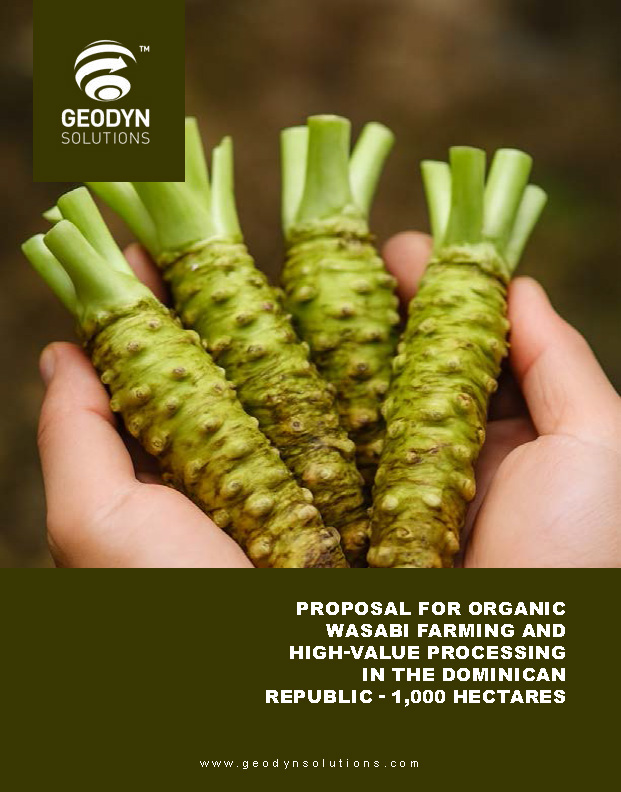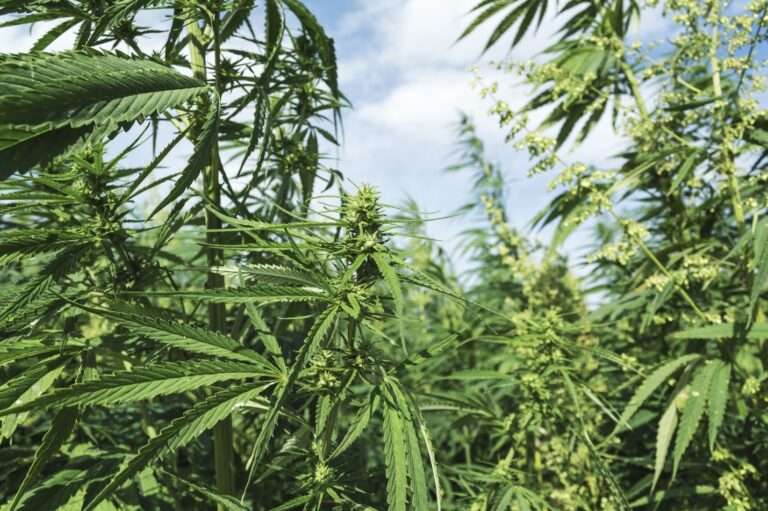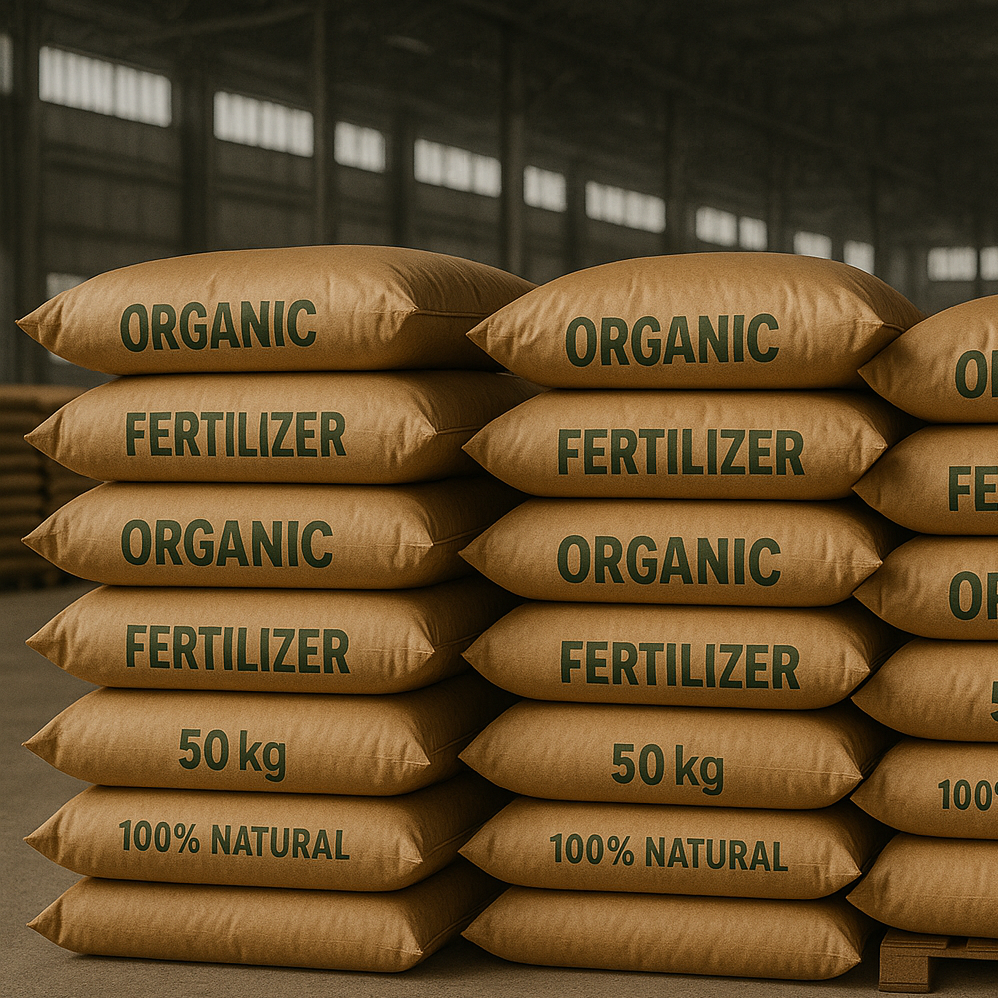Geodyn Solutions Proposal Self-Sustaining Project Network in the Dominican Republic with Advanced Eco-Friendly Manufacturing
Geodyn Solutions proposes a $100 million investment to develop a scalable, self-sustaining, environmentally sustainable ecosystem in the Dominican Republic. The project integrates advanced shrimp and fish farming, feed factories, microbe labs, biofertilizer and biopesticide production, hemp and kenaf cultivation, renewable energy systems, and cutting-edge eco-friendly manufacturing facilities. Using hemp, kenaf, and agricultural waste as primary raw materials, this project aims to produce high-demand, sustainable products like paper, cardboard, to-go boxes, utensils, textiles, bioplastics, and biocomposites, all powered by renewable energy systems.
Key Project Objectives
- Total Investment: $100 million (15% contingency)
- Self-Sustainability: Closed-
loop system using local waste streams - Eco-Friendly Manufacturing: Advanced, low-energy, low-water, minimal-chemical technologies
- Environmental Goals: Waste reduction, carbon emission cuts, renewable energy reliance, biodegradable product manufacturing
- Economic Goals: High ROI, job creation, scalable profit reinvestment
- Profit Allocation After Repayment:
- 30% profit reserve
- 30% profit distribution
- 40% reinvestment for expansion
Project Prioritization and Phased Implementation
Phase 1 (Years 1-2)
- Shrimp and Fish Farms with Processing and Packaging
- Microbe Labs and Biofertilizer/Biopesticide Production
- Feed Factories
Justification: Fast ROI, immediate synergy, strong market demand for shrimp and probiotics, foundation for subsequent phases.
Phase 2 (Years 3-5)
- Hemp and Kenaf Cultivation
- Eco-Friendly Manufacturing Facilities
Phase 3 (Years 6-10)
- Renewable Energy Systems (Solar, Pyrolysis)
- Manufacturing Expansion
Project Components
Shrimp and Fish Farms
- Local species: Shrimp and Tilapia
- Processing facilities with eco-friendly packaging
- Shrimp/fish waste used in feed and probiotic production
Feed Factories
- Produce protein-rich feed using BSF larvae, algae, hemp/kenaf seeds
- Integrated probiotics for aquaculture, poultry, pigs
- Uses project waste and local materials
Microbe Labs
- Probiotic production for aquaculture, poultry, pigs
- Biofertilizers and biopesticides for hemp/kenaf and local farms
- Use of shrimp/fish waste, sugarcane waste, biochar
Hemp and Kenaf Cultivation
- Fiber for eco-friendly manufacturing
- Seeds for animal feed
- Supported by in-house biofertilizers and biopesticides
Eco-Friendly Manufacturing Facilities
- Sustainable products: paper, cardboard, to-go boxes, utensils, textiles, bioplastics, biocomposites
- Technologies: Molded fiber, extrusion, 3D forming, composite manufacturing
- Focus on low-energy, low-water, minimal-chemical processes
Renewable Energy Systems
- Solar and pyrolysis power generation
- Feedstock: Tires, agricultural waste, shrimp/fish waste
- Organic Rankine Cycle (ORC) and heat recovery for maximum efficiency
Financial Breakdown
Component | Investment ($ million) |
|---|---|
Shrimp/Fish Farms & Processing | 15 |
Microbe Labs & Biofactories | 12 |
Feed Factories | 10 |
Hemp/Kenaf Cultivation | 8 |
Eco-Manufacturing Facilities | 25 |
Renewable Energy Systems | 15 |
Contingency Reserve | 15 |
Total | 100 |
Financial Projection (Year 1 to Year 10)
Year | Annual Expense ($ million) | Annual Profit ($ million) |
|---|---|---|
1 | 20 | 5 |
2 | 15 | 12 |
3 | 12 | 20 |
4 | 10 | 25 |
5 | 9 | 30 |
6 | 10 | 40 |
7 | 12 | 50 |
8 | 14 | 60 |
9 | 14 | 65 |
10 | 14 | 70 |
- Initial repayment begins in Year 4 after breakeven.
- Profit allocation: 30% profit reserve, 30% profit distribution, 40% reinvestment from Year 4 onward.
Detailed Operational Cost Breakdown
Component | Yearly OPEX ($ million) |
|---|---|
Shrimp/Fish Farms & Processing | 4 |
Microbe Labs & Biofactories | 3 |
Feed Factories | 2 |
Hemp/Kenaf Cultivation | 1 |
Eco-Manufacturing Facilities | 3 |
Renewable Energy Systems | 1 |
Total Annual OPEX | 14 |
Sensitivity Analysis: Profit Variation Scenarios
Year | -20% Profit | -10% Profit | Base Profit | +10% Profit | +20% Profit |
|---|---|---|---|---|---|
1 | 4.00 | 4.50 | 5.00 | 5.50 | 6.00 |
2 | 9.60 | 10.80 | 12.00 | 13.20 | 14.40 |
3 | 16.00 | 18.00 | 20.00 | 22.00 | 24.00 |
4 | 20.00 | 22.50 | 25.00 | 27.50 | 30.00 |
5 | 24.00 | 27.00 | 30.00 | 33.00 | 36.00 |
6 | 32.00 | 36.00 | 40.00 | 44.00 | 48.00 |
7 | 40.00 | 45.00 | 50.00 | 55.00 | 60.00 |
8 | 48.00 | 54.00 | 60.00 | 66.00 | 72.00 |
9 | 52.00 | 58.50 | 65.00 | 71.50 | 78.00 |
10 | 56.00 | 63.00 | 70.00 | 77.00 | 84.00 |
Risk Scenarios and Mitigation Strategies
Risk Factor | Mitigation Strategy |
|---|---|
Fish Disease Outbreak | Implement probiotic programs and intensive monitoring |
Market Price Drop for Shrimp | Diversify product portfolio and establish fixed-price contracts |
Feedstock Supply Chain Disruption | Partner with local cooperatives and build inventory buffers |
Manufacturing Equipment Failure | Establish preventative maintenance schedules and hold critical spares |
Regulatory Delays | Early regulatory engagement and continuous compliance tracking |
Project Milestones
Phase | Year | Milestone Description |
|---|---|---|
Phase 1 | 1 | Start shrimp/fish farm construction |
Phase 1 | 2 | Complete shrimp/fish farms and microbe labs |
Phase 1 | 2 | Start feed production and initial market sales |
Phase 2 | 3 | Begin hemp/kenaf cultivation |
Phase 2 | 4 | Launch eco-manufacturing facilities |
Phase 2 | 5 | Reach breakeven and start profit allocation |
Phase 3 | 6 | Integrate renewable energy systems |
Phase 3 | 7 | Expand manufacturing capacity |
Phase 3 | 8 | Achieve full operational synergy |
Phase 3 | 9-10 | Continuous profit growth and reinvestment cycles |
ROI and Market Analysis
- Shrimp/Fish Farming: Quick ROI, 20-30% annual return potential
- Eco-Friendly Products: Bioplastics market projected at $44.9 billion by 2027
- Probiotics/Biofertilizers:
Rapidly growing sustainable agriculture segment - Energy Production: Lower long-term costs than grid purchase within 5 years
Profit Allocation Strategy
Post-repayment of the initial investment:
- 30% Profit Reserve: Financial security and risk management
- 30% Profit Distribution: Investor and stakeholder returns
- 40% Reinvestment: Expansion of facilities and product lines
Job Creation and Economic Impact
Phase | Direct Jobs | Indirect Jobs |
|---|---|---|
Phase 1 | 500 | 750 |
Phase 2 | 800 | 1,200 |
Phase 3 | 700 | 1,000 |
Total | 2,000 | 2,950 |
Risk Management
- Fish Disease: Controlled via probiotics and best aquaculture practices
- Market Volatility: Diversified product portfolio
- Supply Chain Delays: Local cooperative partnerships
- Energy Security: In-house renewable systems
- Contingency Fund: $15 million reserved for unexpected challenges
Environmental Impact
- Waste diversion: 10,000+ tons/year
- CO2 emission reduction through renewable energy
- Plastic waste reduction via biodegradable products
- Soil health improvement through biofertilizers and biochar
Market Validation
- Strong global and local demand for sustainable seafood, eco-packaging, bioplastics, and biocomposites
- FAO, Grand View Research, and Allied Market Research confirm growth trends
Conclusion
Geodyn Solutions’ self-sustaining project network positions the company as a leader in circular economy innovation in the Dominican Republic. This integrated system promises high ROI, job creation, and environmental benefits within a scalable, renewable energy-powered framework.
The project will set new standards for sustainable aquaculture, eco-friendly manufacturing, and renewable energy deployment, creating long-lasting value for investors, local communities, and the environment.
Next Steps
- Detailed feasibility and engineering studies
- Finalize land acquisition and cooperative agreements
- Secure regulatory approvals
- Begin Phase 1 construction and implementation
Attachments (to be developed)
- Detailed Financial Models
- Market Research Reports
- Environmental Impact Assessments
- Engineering Layouts and Timelines
- Sensitivity Analysis Visualizations
- Risk Management and Contingency Plans
This proposal now includes comprehensive financial projections, detailed operational costs, milestone schedules, sensitivity analyses, and detailed risk management strategies. Additional detailed graphs and contingency planning documents can be provided upon request.




